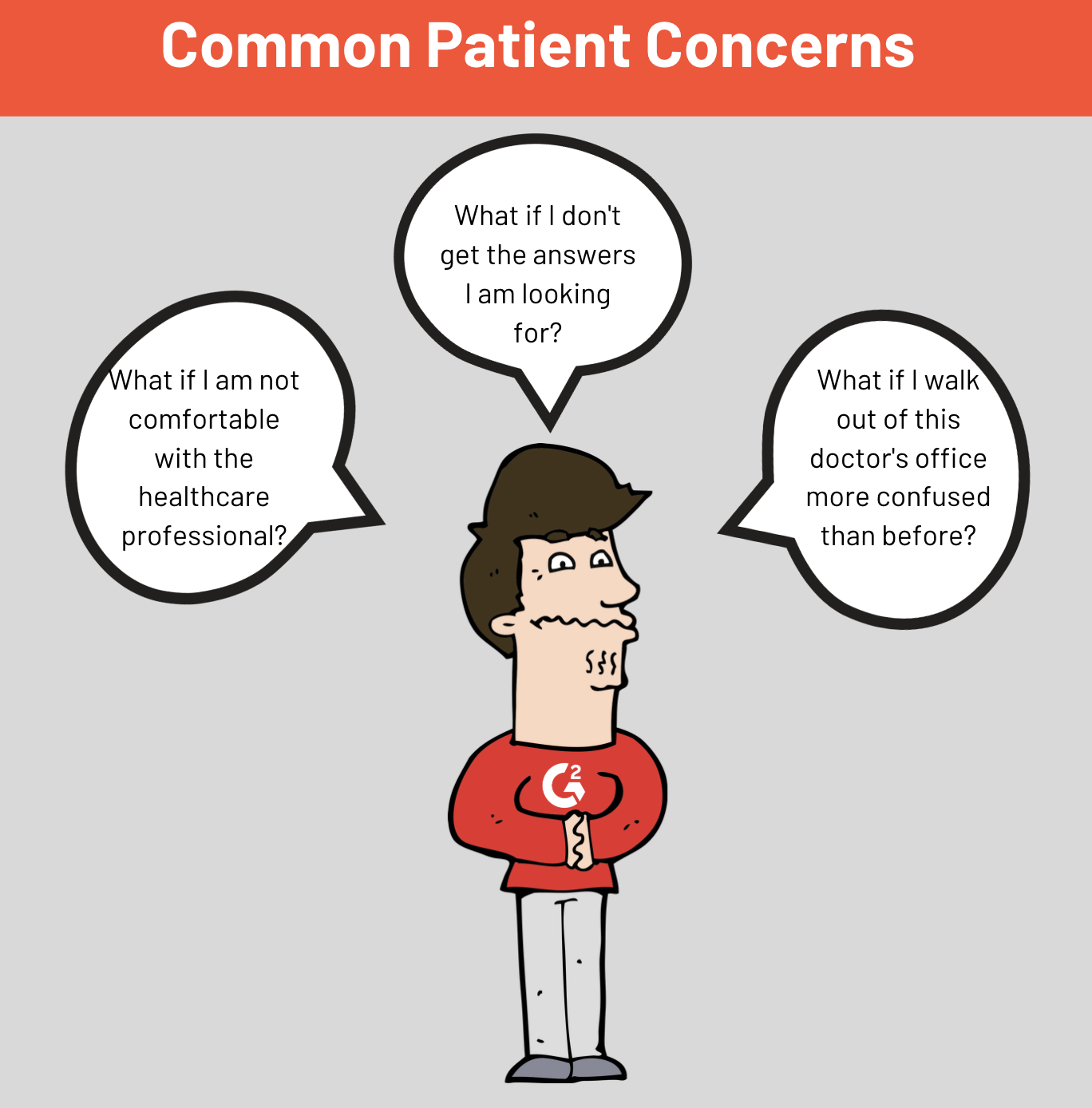The events we have lived through and the knowledge we have gained from those happenings make us who we are.
A better way to say that is that our experiences shape us.
Not to get all philosophical on you, but since the definition of experience is a direct observation of or participation in events, the word can technically describe all of our actions. From brushing our teeth in the morning to seeing our favorite singer in concert, there are takeaways in almost everything we do.
There is one experience in particular that people tend to dread: the patient experience. Walking into a doctor’s office can be intimidating and walking out can leave a bad taste in our mouths. That is unless, that healthcare facility has established and maintained a positive patient experience.
What is the patient experience?
Patient experience includes every interaction that a patient has with a facility or person in the healthcare system, including doctors, nurses, health plans, and healthcare facilities. Aspects of the patient experience include making appointments, having access to necessary information, and the face-to-face interaction with a healthcare professional.
Why is the patient experience important?
Providing a positive patient experience is important because it makes patients feel cared for, results in better healthcare outcomes, and leads to more patients and revenue.
A lot of healthcare organizations do their best to provide patient-centric care, which is an approach to healthcare where practitioners align their decisions with the needs of a patient. A key step in getting there is to understand what the patient experience is, why it matters, and how to improve it.
Patient experience vs patient satisfaction
A lot of people tend to confuse the terms patient satisfaction and patient experience. While they both involve an individual’s involvement with a healthcare organization, they are different measurements.
Patient experience: As stated above, patient experience involves the processes included in a healthcare setting. To assess patient experience, evaluators must ask if something did or did not happen during a patient’s visit.
Patient satisfaction: Patient satisfaction differs from person to person. As opposed to identifying if a certain action occurred, patient satisfaction is about whether or not the individual was pleased with the experience. To assess patient satisfaction, evaluators will ask whether or not the individual’s expectations were met.
For example, two people can have the same exact patient experience, but if one patient has high expectations and the other one not so much, then the patient satisfaction will differ. Both of these assessments are extremely valuable to healthcare professionals and organizations.
Patient experience and satisfaction can both be improved with patient engagement software, which can help create an active and collaborative patient-doctor relationship.
Want to learn more about Patient Engagement Software? Explore Patient Engagement products.
Why is patient experience important?
As healthcare becomes less and less affordable, people are considering visiting the hospital or going in for a check up to be a financial risk. Patients can often times find themselves asking a lot of questions before their visit.

Patients have had to put in a lot more effort nowadays to ensure they are getting the best care for what they’re paying. Like a lot of other buying decisions, users will compare their available options before deciding on the one they feel best suits their needs.
A lot of times, this comparison of services will be done by asking friends for recommendations or checking out an online review site to see how people felt about their experience. People like to get input from their peers, and news about a good, or bad, experience can travel fast. Providing that positive patient experience will help build a solid reputation and bring about more business.
If a healthcare organization is providing a wonderful patient experience, which can result in patient satisfaction, relationships can be created and in turn, customers can start to develop a sense of loyalty. Instead of cutting down on costs here and there, healthcare organizations are becoming more profitable by improving the patient experience to attract and maintain consumers.
How do you measure patient experience?
Measuring patient experience can simply include checking off boxes to make sure that a healthcare professional fulfills all of their duties. Patient satisfaction is measured more in a survey style where patients are asked how they feel about their experience. While we are focusing on patient experience here, the best way to measure both is with a survey.
Providing patients with a survey after their visit to a healthcare facility is the best way to gather information on their experience, how it made them feel, and how they think it could be improved.
Building surveys is simple, especially with survey software.
How to improve the patient experience
Achieving a perfect patient experience is close to impossible, but that doesn’t mean that you shouldn’t do your best to get there. Here are a couple ideas for improving the patient experience at your healthcare facility.
Revamp the appearance
While we all try to not judge a book by its cover, we don’t always succeed. Also, if you are going to judge one place by the cleanliness and overall mood, it is going to be a place where you are about to receive healthcare services.
This isn’t just about the office where you meet patients face to face. Make sure your website, payment portals, and working professionals are all approachable for a diverse group of patients.
Be attentive and respectful
The purpose of a visit can differ from patient to patient, but they all have one thing in common: they are all there to receive care. From the minute they walk in the door to the end of their appointment, they want to feel cared for and respected.
Make sure every person, from the front desk receptionist to the health care professional, provides a consistently high standard of care to every patient, and hold them accountable for their performance. Make sure they pay attention to the patient, respect their concerns and privacy, and deliver open and honest communication.
| Related: Learn more about how protected healthcare information can be stored and shared electronically. |
Increase accessibility
Patient experience is more than just providing quality care and satisfaction while they are right in front of you. You need to be accessible before the experience even begins.
Offer options for scheduling and confirming appointments (email, phone, online, in person, etc.). Think about barriers that certain patients have to overcome to access healthcare (geographical, financial, etc.) and think of ways to accomodate for those individuals.
Make sure your patients know how to reach you, as well. Chances are, they can’t find answers to the questions they have anywhere else.
Experience is everything
It’s true. A bad experience can leave people with negative feelings towards your organization, especially when it comes to something as unappealing as a trip to the doctor’s office. A lot of different factors affect the customer experience, but with the right tactics to improve it, your patients will leave smiling.
Check out the truly amazing ways that AI is being used in healthcare.

Mary Clare Novak
Mary Clare Novak is a former Content Marketing Specialist at G2 based in Burlington, Vermont, where she is explored topics related to sales and customer relationship management. In her free time, you can find her doing a crossword puzzle, listening to cover bands, or eating fish tacos. (she/her/hers)
